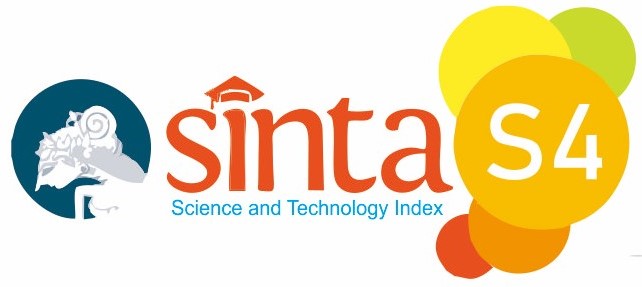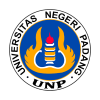Review of Padang 1 State Vocational School’s Machinery Workshop Facilities and Infrastructure
Abstract
This article describes issue of mechanical worshop facilities and infrastructures at Vocational High School 1 Padang, aims to evaluate the availability and feasibility of facilities and infrastructure, in order to encourage learning process of mechanical engineering. This study reviews aspects related to the adequacy of mechanical workshop’s facilities and infrastructures including the existence and condition of machine, workshop space to other supporting infrastructure linked to work productivity and safety such as wall, lighting, ventilation, and floor conditions. Descriptive quantitative method was used with data collection techniques consisting of observation, interview with workshop managers, and documentation. The result revealed 87% of the facilities were classified as operational and available to support practical activities. Total percentage of feasibility for each workshop are: 90% of the lathe workshop, 77% of the miling machine workshop, 90% of the bench workshop, and 92 % of the welding and grinding machine workshop. The maximum percentage of facility feasibilities which is 100% has not been achieved, influenced by several factors related to the damage and unavailability of several items. In infrastructure, the ventilation is of standard size; lighting is appropriate and sufficient; the wall is of limited height and filled with large machines resulting in limited space for movement; the floor of the lathe workshop is inadequate with a number of cement patches on the floor cracks. Indicating the need for repairs and upgrades to increase the percentage of feasibility to maximum.
References
Arikunto S. (2010). Prosedur Penelitian suatu pendekatan praktek. Rineka Cipta.
Bararah, I. (2020). Pengelolaan sarana dan prasarana pendidikan dalam meningkatkan kualitas pembelajaran. Jurnal MUDARRISUNA: Media Kajian Pendidikan Agama Islam, 10(2), 351–370.
Bottoms, G. (1992). Making High Schools Work through Integration of Academic and Vocational Education.
Bukit, M. (2014). Strategi dan Inovasi Pendidikan Kejuruan dari Kompetensi ke Kompetensi.
Firdaus, W. R. C., & Andriawan, A. H. (2023). Kajian Teknis Penerangan Bengkel Produksi Kapal Perang Di PT. PAL Indonesia. Jurnal Teknik Mesin, Industri, Elektro Dan Informatika, 2(3), 1–15.
Firmansyah, T., Supriyanto, A., & Timan, A. (2018). Efektivitas pemanfaatan sarana dan prasarana dalam meningkatkan mutu layanan. JMSP: Jurnal Manajemen Dan Supervisi Pendidikan, 2(3), 179–184.
Grubb, W. N. (1985). The convergence of educational systems and the role of vocationalism. Comparative Education Review, 29(4), 526–548.
Hill, S. (2022). Seeing anew: the role of student leadership in professional learning. In Leadership for Professional Learning (pp. 48–64). Routledge.
Hyland, T. (2019). Vocational studies, lifelong learning and social values: investigating education, training and NVQs under the new deal. Routledge.
Kovalchuk, V., Maslich, S. V, Tkachenko, N., Shevchuk, S. S., & Shchypska, T. P. (2022). Vocational education in the context of modern problems and challenges. Journal of Curriculum and Teaching, 8(11), 329–338.
MacBeath, J., Dempster, N., Frost, D., Johnson, G., & Swaffield, S. (2018). Strengthening the connections between leadership and learning: Challenges to policy, school and classroom practice. Routledge.
Mamahit, C., & Pangestu, P. (2024). Desain dan Analisis Pencahayaan Gedung Bengkel Universitas Negeri Manado. ELECTRON Jurnal Ilmiah Teknik Elektro, 5(1), 46–52.
Prasasti, A. A., Ernawati, M., & Fatah, M. Z. (2023). Analisis Intensitas Cahaya Pada Area Kerja Machining Berdasarkan Standar Pencahayaan. Journal of Industrial Hygiene and Occupational Health, 8(1), 77–88.
Purnamaningsih, I. R., & Purbangkara, T. (2022). Pengelolaan Sarana Dan Prasarana Pendidikan Dalam Meningkatkan Kualitas Pembelajaran. uwais inspirasi indonesia.
Scollard, S. (2020). Updating vocational curriculum in two year diploma programs at one Ontario college of applied arts and technology to align with current industry practices. Journal of Vocational Education & Training, 72(4), 623.
Siedlecki, S. L. (2020). Understanding descriptive research designs and methods. Clinical Nurse Specialist, 34(1), 8–12.
Sugiyono. (2008). Metode Penelitian Pendidikan: Pendekatan Kuantitatif, Kualitatif, dan R & D. (p. 334). Alfabeta.
Sugiyono, D. (2013). Metode penelitian pendidikan pendekatan kuantitatif, kualitatif dan R&D. Alfabeta.
Sukardi, H. M. (2021). Metodologi Penelitian Pendidikan: Kompetensi Dan Praktiknya (Edisi Revisi). Bumi Aksara.
Vischer, J. C. (2012). Workspace strategies: Environment as a tool for work. Springer Science & Business Media.
Widodo, W., & Ngadiyono, Y. (2021). Kelayakan Sarana Dan Prasarana Bengkel Pemesinan Di Smk Negeri 2 Yogyakarta. Jurnal Dinamika Vokasional Teknik Mesin, 6(2), 166–173. https://doi.org/10.21831/dinamika.v6i2.44136
Wolf, A. (2011). Review of vocational education. London: DfE.
Submitted
Copyright (c) 2025 Jurnal Vokasi Mekanika

This work is licensed under a Creative Commons Attribution 4.0 International License.








.svg_.png)


